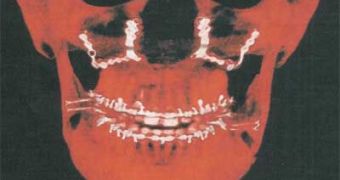Reconstructive surgeons got a helping hand from engineers and researchers at the University of Illinois and the Ohio State University Medical Center. The team designed a face reconstruction model by using a technique called topology optimization.
Illness or injuries can cause facial bones loss and reconstructive surgery is needed. Until now, patients had to be extremely lucky to be operated by a highly skilled surgeon, because the bones were shaped by hand. The intervention would often cause problems, not just from an esthetic point of view, patient's quality of life having to suffer. Mid-face bones are vital for eating, chewing and swallowing, for breathing and speaking properly, and so, a perfect facial reconstruction intervention is what every patient wishes for.
Gabriel Paulino, the Donald Biggar Willett Professor of Engineering at the University of Illinois, says that “the mid-face is perhaps the most complicated part of the human skeleton. What makes mid-face reconstruction more complicated is its unusual unique shape (bones are small and delicate) and functions, and its location in an area susceptible to high contamination with bacteria.”.
Usually surgeons take bone parts from the patient's shoulder blade or hip, and shape them to fit the face bones. But even a perfect shaping might prove somehow unsuccessful because of the different density and structure of the bones.
This new method, used generally by engineers in high buildings' construction, is based on a 3D computer model, that takes everything into consideration. It integrates several concepts from medicine, biology, mechanics, computations and numerical methods. “It tells you where to put material and where to create holes. Essentially, the technique allows engineers to find the best solution that satisfies design requirements and constraints.” Paulino says.
Topology optimization will allow every patient to have a custom made facial reconstruction. Each intervention will be analyzed according to the patient's background and type of injury. The new structure will consider things like blood flow, chewing forces, sinus cavities and soft tissue support. Once the model being created on the computer, doctors will have a very clear idea about how the patient will look.
After proving that computer models are applicable to real live situations, researchers are now searching for a way of creating live tissue that will allow the fabrication of actual bones, that would fit perfectly into the model. Paulino added that the technique “has the potential to pave the way toward development of tissue engineering methods to create custom fabricated living bone replacements in optimum shapes and amounts. The possibilities are immense and we feel that we are just in the beginning of the process.”.

 14 DAY TRIAL //
14 DAY TRIAL //